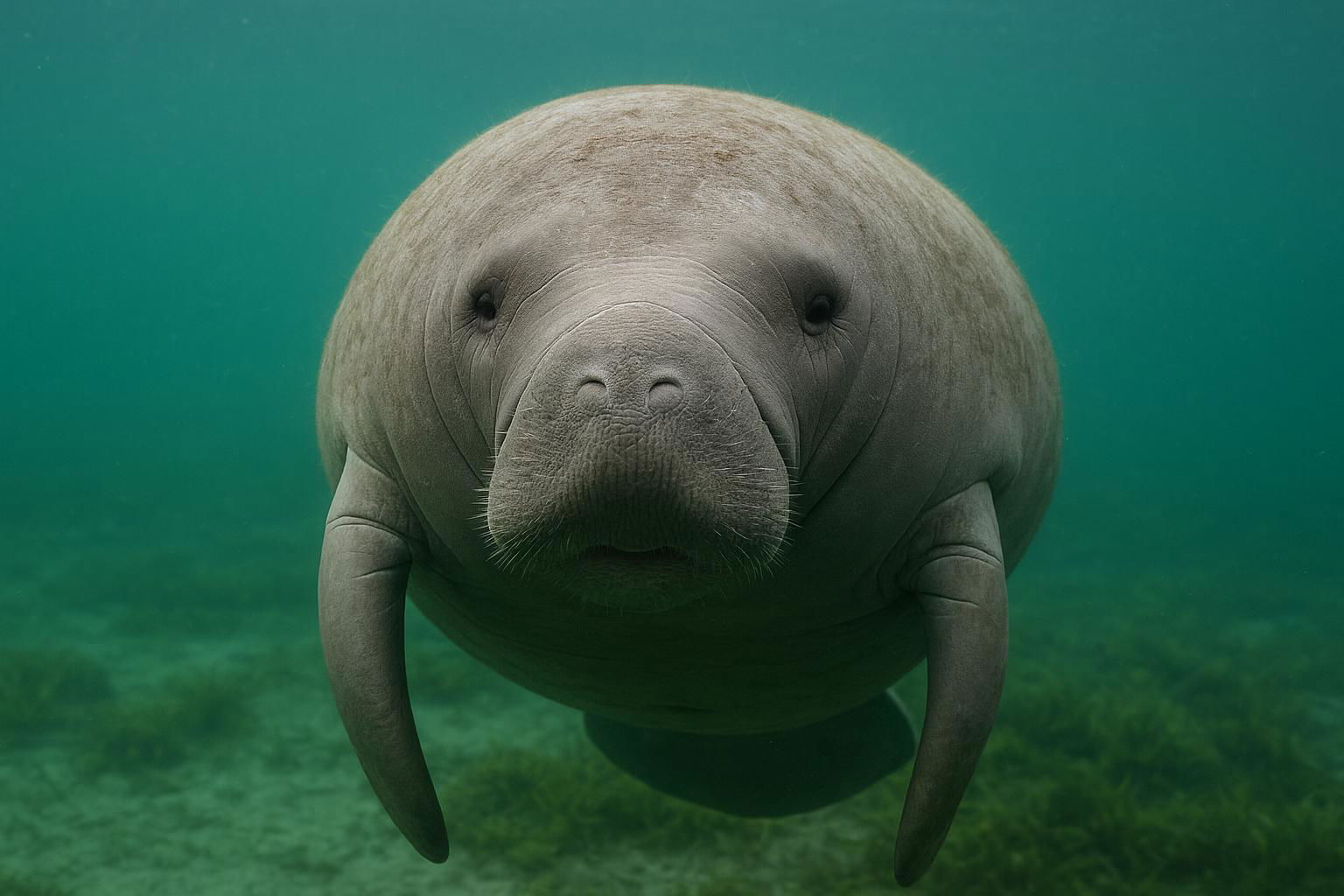
West Indian Manatee
Trichechus manatus
The West Indian Manatee (Trichechus manatus), also known as the "sea cow," is a gentle and slow-moving marine mammal found primarily in the warm coastal waters, rivers, and estuaries of the southeastern United States, the Caribbean Sea, and along Central and South America. These aquatic herbivores are notable for their large, robust bodies that can weigh up to 1,200 pounds and stretch over 10 feet in length. Their skin is thick and wrinkled, typically gray or brown, and sparsely covered with whisker-like hairs, which assist in sensory perception.
Equipped with paddle-like flippers and a rounded, flat tail, the manatees are well-adapted for swimming gracefully in shallow waters where they graze on seagrasses, algae, and other submerged vegetation. Despite their size, they can prop the front part of their body out of the water, which allows them to grasp vegetation or interact with their surroundings. Known for their docile temperament, these creatures communicate through a variety of vocalizations, primarily during social interactions and between mothers and calves.
The West Indian Manatee faces several threats, including habitat destruction, boat collisions, and environmental changes, which contribute to their vulnerable status. Conservation efforts focus on protecting their natural habitats and raising awareness about safe boating practices to ensure the survival of these remarkable marine mammals for future generations.

 All Species & Breeds
All Species & Breeds
 Highland Cattle
Highland Cattle
 Miniature Donkeys
Miniature Donkeys
 All Species Directory
All Species Directory
 Highland Cattle in Virginia
Highland Cattle in Virginia
 Miniature Donkeys in Texas
Miniature Donkeys in Texas












